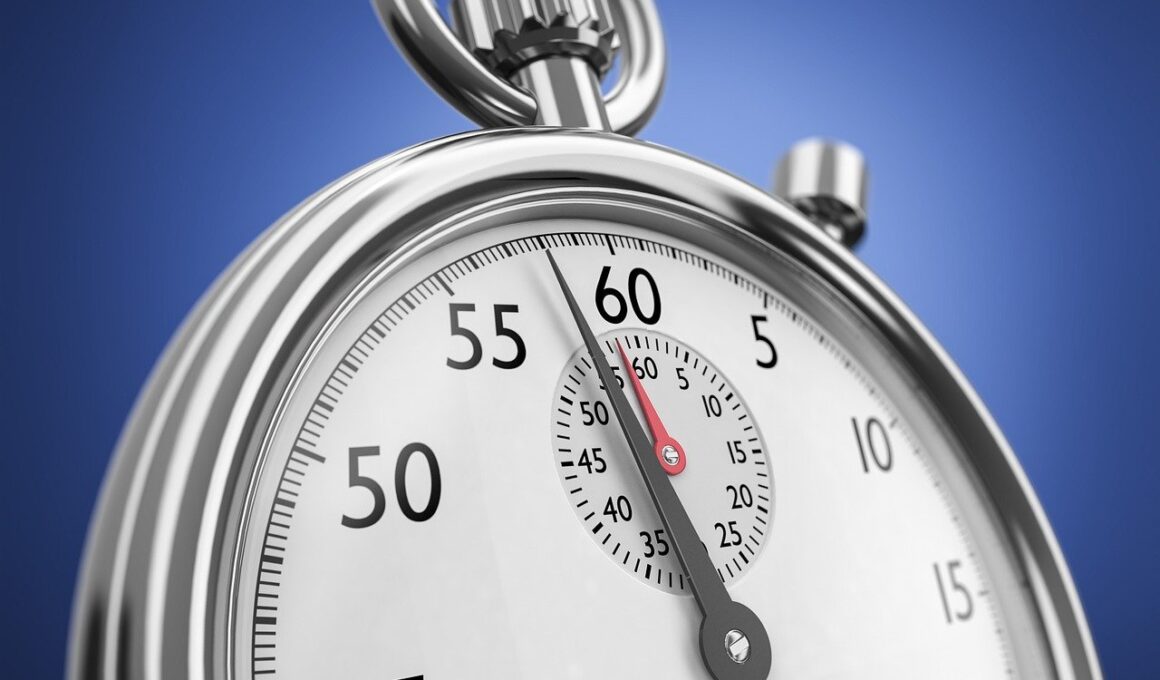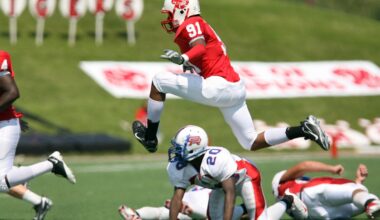The Future of Force Sensing Technologies in Sports Biomechanics
In the realm of sports biomechanics, precise force measurement technologies prove indispensable for optimizing athletic performance and preventing injuries. The future of these technologies remains exciting and transformative, promising to enhance the way coaches and athletes understand performance metrics. Innovative sensors integrated into athletic gear facilitate continuous monitoring of force exerted during various physical activities. Utilizing advanced materials and analytical software, we can gather real-time data on athletes’ biomechanics. Such data enable trainers to tailor training regimens specific to each athlete’s unique requirements and help foster improvements in technique and performance. We can expect future devices to become increasingly user-friendly, enabling easy data interpretation without requiring extensive technical knowledge. Moreover, with the integration of artificial intelligence, predictive analytics will emerge, allowing for proactive athlete management. As these developments progress, they will usher in a new era of personalized athletics. Therefore, athletes at all levels will significantly benefit from these advancements, as injury risk diminishes, recovery accelerates, and performance peaks. Enhanced accuracy and reliability of force measurement technologies hold particular promise for reshaping competitive sports around the world, forging pathways toward a brighter future for athletes and teams alike.
Modern force measurement technologies emphasize the transition from traditional methods to advanced sensing solutions. Traditional techniques often entail cumbersome equipment that limits the athletes’ mobility during training and competition. However, the evolving landscape of smart textiles and wearables has revolutionized how force measurements are taken. Sensors embedded in fabrics allow athletes to move freely and naturally while obtaining accurate performance data. The accuracy of these next-generation sensors stems from their ability to measure multiple force vectors simultaneously, offering comprehensive insights into biomechanics. We can expect future devices to seamlessly integrate into athletic wear, eliminating external equipment that can distract or hinder performance. Ensuring the durability of these sensors during high-intensity sports is another vital consideration; advancements in nanotechnology and material sciences will help maintain reliability without compromising performance. Moreover, enhancements in battery technology will facilitate extended usage periods without requiring frequent recharges. As these technologies become more accessible, we will see a growing number of athletes adopting such innovations to monitor their performance and enhance their training. Together, these developments will point toward an athletes’ future where performance optimization becomes a standard through unmatched precision in force measurement.
Integration of AI in Force Measurement
Artificial intelligence (AI) integration into force sensing technologies has the potential to redefine athletic training methodologies. Data analysis traditionally required extensive manual input and interpretation can now be automated, expediting the coaching process. Machine learning algorithms can analyze vast datasets collected from athletes and generate actionable insights. These insights enable coaches to evaluate performance trends and make informed decisions regarding training schedules, recovery times, and injury prevention strategies. Furthermore, predictive modeling can assess the likelihood of injury by examining historical data trends, which can help identify at-risk athletes before injuries occur. AI systems continuously learn and improve based on the feedback they receive, making them increasingly effective tools for sports analytics. As smart devices proliferate in sports applications, the resulting data generated will lead to more sophisticated AI applications that can simulate various scenarios and predict performance outcomes. This level of intelligence not only empowers athletes but also enhances coaching efficacy, creating a collaborative ecosystem to deter injuries and boost performance. By synergizing force measurement technologies with AI, the future of sports practices will be more data-driven, relying on precision insights for enhanced athlete development.
Moreover, the evolution of data visualization methods significantly influences how force measurement data is interpreted. Traditional numerical data often fail to convey the nuances of an athlete’s performance effectively, but innovative visualization techniques can transform raw data into comprehensible formats. Graphical representations such as heat maps, 3D plots, or real-time feedback displays enable coaches to grasp complex information at a glance. As a result, athletes and coaches can engage in more productive discussions concerning performance metrics, enhancing the training experience. Analysts are beginning to rely more on software applications providing real-time data visualizations, which improve decision-making in responding to athletic performance needs. This way, athletes can visualize their strength, balance, and momentum throughout their movements, allowing for instant adjustments during training sessions. Future applications will also likely incorporate augmented and virtual reality, further immersing athletes into their performance data. As visualization continues to advance, it will ensure that force measurement technologies remain at the forefront of performance analysis, guiding athletes toward their potential while fostering a deeper understanding of biomechanics in real-time.
Challenges and Innovations
Despite the promising future of force measurement technologies, several challenges still must be addressed. One significant concern involves the reliability and accuracy of the sensors under varied environmental conditions. For athletes engaged in diverse sports, it is crucial that these sensors maintain performance consistency during extreme weather fluctuations, differing terrains, or varying humidity levels. Developing robust sensors capable of withstanding such conditions will require innovative engineering solutions. Moreover, issues such as data privacy and security must be taken into account; as athletes increasingly rely on these technologies, the protection of personal data becomes paramount. Ensuring a safe method of data storage and transfer is essential to prevent unauthorized access or misuse. Additionally, the potential for technology dependency in athletes raises concerns about their ability to perform without these aids. Therefore, as we progress, it is vital to educate athletes on how to use these technologies as complementary tools rather than crutches. Tackling these challenges through persistent innovation will pave the way for new advancements, solidifying force measurement technologies’ crucial role in the sports industry for the foreseeable future.
Furthermore, exceptional developments in mobile applications will also shape the future of force measurement technologies. Athletes and coaches can expect to leverage smartphone applications to monitor performance metrics directly from their personal devices. These applications will incorporate intuitive user interfaces, ensuring that athletes of all technology levels can navigate them easily. Notifications and reminders for training sessions, pending analyses, and feedback links will enhance user engagement. Integration with wearables will enable seamless data syncing, allowing real-time updates on various metrics relevant to training. Moreover, cloud computing will facilitate remote training and coaching sessions, enabling coaches to analyze data and provide feedback from virtually anywhere. This ongoing connectivity will permit instantaneous communication between athletes and coaches, fostering immediate adjustments based on performance analytics. Furthermore, gamification elements in such applications can enhance motivation and increase athlete adherence to their training regimens. Engaging features, challenges, and rewards will help athletes focus on their goals while tracking progress through user-friendly platforms. These mobile applications represent a significant advancement in how athletes monitor, analyze, and improve performance in a connected world.
The Road Ahead
As we embrace the potential of force sensing technologies in sports biomechanics, the convergence of disciplines will become increasingly evident. Collaboration between engineers, sports scientists, and athletes will pave new roads toward performance enhancements and injury prevention. By working together, teams can identify crucial metrics and ways to refine technology for optimal use in various sports contexts. Education surrounding these technologies plays a fundamental role in ensuring their widespread adoption. Coaches, athletes, and organizations must engage in training around the usage and interpretation of data collected. As schools and leagues begin incorporating these systems into regular training sessions, every athlete can benefit from an evidence-based approach to improving performance. Furthermore, we anticipate continued investment from industries interested in sports technology innovations, resulting in more funded research initiatives. Such partnerships between academia and the corporate world will yield expertise, insights, and mechanisms that enhance our understanding of biomechanics. The future of force sensing technologies in sports biomechanics stands as a testament to the revolutionizing impact of technology on human performance, shaping the very fabric of athletic achievement, compatibility, and education.
In summary, the future of force measurement technologies in sports biomechanics heralds a new dawn of understanding and optimizing athletic performance. From advanced sensors integrated with artificial intelligence to intuitive mobile applications, we find ourselves at the cusp of powerful innovations. Athletes and coaches will increasingly rely on these advancements to enhance training efficacy while minimizing injury risks. The evolution of visualization techniques will empower users to interpret complex data easily, ultimately transforming how training regimens are devised and executed. As challenges around reliability, data protection, and technology dependency arise, continuous efforts in research and innovation will ensure these technologies grow robustly. The dynamic interplay between various stakeholders—engineers, scientists, athletes, and organizations—will foster a collaborative environment wherein knowledge sharing leads to further breakthroughs. Continued education around these technologies and their uses will play a crucial role in ensuring athletes can maximize their potential without undermining their foundational skills. The journey of force measurement technologies is ongoing, but the exciting possibilities of their application in sports biomechanics present a bright future for athletes and coaches alike. As sports evolve, so too will our understanding of human biomechanics, ultimately redefining the essence of athletic excellence.


